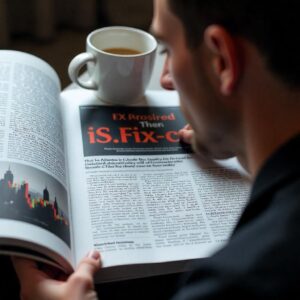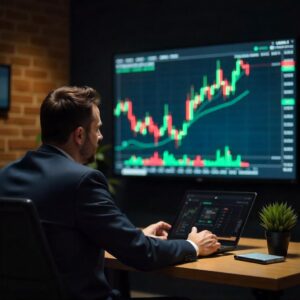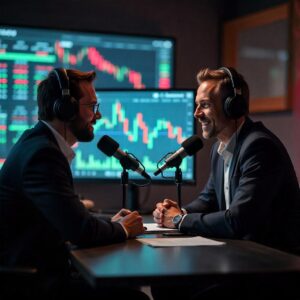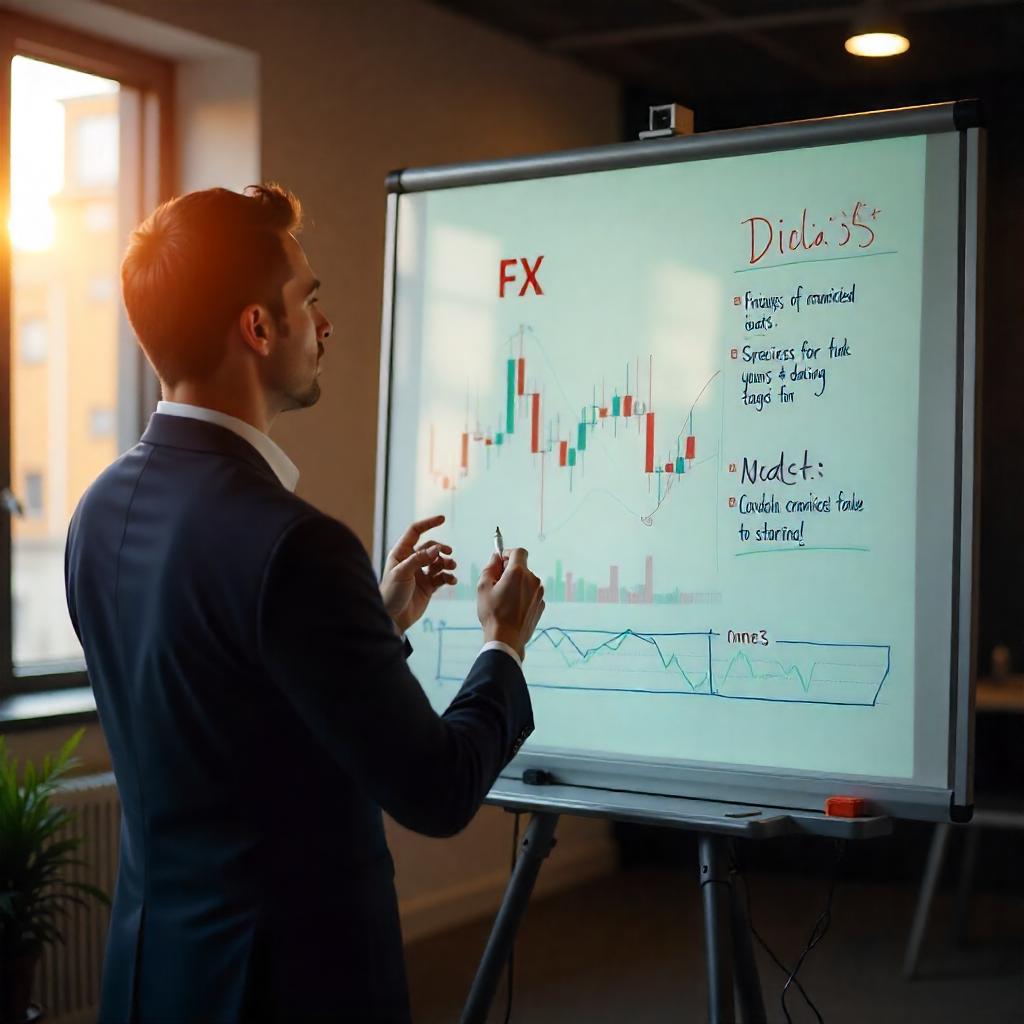1. Introduction to FX Trade
Definition of FX Trade
FX trade, or foreign exchange trading, is the process of buying and selling currencies in the foreign exchange market. This market is a decentralized global marketplace where participants trade national currencies against one another. The FX trade market operates 24 hours a day, five days a week, making it the largest and most liquid financial market in the world, with daily trading volumes exceeding $6 trillion.

In FX trade, currencies are exchanged in pairs, such as EUR/USD (Euro/US Dollar) or USD/JPY (US Dollar/Japanese Yen). The first currency in the pair is known as the base currency, while the second is the quote currency. The exchange rate indicates how much of the quote currency is needed to purchase one unit of the base currency. This mechanism facilitates international trade, investment, and tourism, allowing businesses and individuals to convert currencies as needed.
Importance of FX Trade
The significance of FX trade extends far beyond mere currency exchange. It plays a vital role in the global economy by facilitating international trade and investment. Here are several key reasons why FX trade is essential:
- Facilitates International Trade: Businesses engaged in international trade require foreign currencies to pay for goods and services. The FX trade market enables these transactions to occur smoothly.
- Provides Liquidity: The FX trade market is known for its high liquidity, allowing traders to execute large transactions without significantly impacting exchange rates. This liquidity is crucial for businesses and investors who need to convert currencies quickly.
- Hedging Against Currency Risk: Companies that operate in multiple countries face the risk of currency fluctuations. Through FX trade, they can hedge against this risk by locking in exchange rates for future transactions.
- Investment Opportunities: Individual traders and institutional investors can profit from fluctuations in currency values. The FX trade market offers numerous opportunities for speculative trading, allowing participants to capitalize on price movements.
- Economic Indicators: The FX trade market is influenced by economic indicators such as interest rates, inflation, and political stability. As a result, it serves as a barometer for global economic health, providing insights into the performance of various economies.
Market Size
The FX trade market is colossal, dwarfing all other financial markets in terms of daily trading volume. According to the Bank for International Settlements (BIS), the average daily turnover in the foreign exchange market reached $6.6 trillion in April 2022. This staggering figure highlights the market’s depth and liquidity, making it an attractive venue for traders worldwide.
The FX trade market is characterized by its decentralized nature, with no central exchange or governing body. Instead, trading occurs over-the-counter (OTC) through a network of banks, brokers, and financial institutions. Major trading centers include London, New York, Tokyo, and Sydney, each contributing to the continuous flow of currency transactions.

2. How the FX Trade Market Works
Market Participants
The FX trade market comprises various participants, each playing a unique role. Understanding these players is crucial for grasping how the market operates:
- Central Banks: Central banks, such as the Federal Reserve (U.S.) and the European Central Bank (ECB), engage in FX trade to manage their currency’s value and stabilize their economies. They may intervene in the market by buying or selling currencies to influence exchange rates.
- Commercial Banks: Large financial institutions facilitate currency transactions for clients and engage in proprietary trading. They often act as market makers, providing liquidity to the market by quoting buy and sell prices.
- Corporations: Companies involved in international trade use the FX trade market to hedge against currency risk and manage foreign exchange exposure. For example, a U.S. company importing goods from Europe may need to purchase euros to pay its suppliers.
- Retail Traders: Individual traders participate in the FX trade market through online platforms, seeking to profit from currency fluctuations. Retail trading has grown significantly in recent years, thanks to advancements in technology and access to trading platforms.
- Hedge Funds and Institutional Investors: These entities engage in FX trade for speculative purposes and to diversify their investment portfolios. They often have substantial capital and employ sophisticated trading strategies.
Currency Pairs
In FX trade, currencies are traded in pairs. Each pair consists of a base currency and a quote currency. The base currency is the first currency listed in the pair, while the quote currency is the second currency. For example, in the EUR/USD pair, the euro (EUR) is the base currency, and the U.S. dollar (USD) is the quote currency.
The exchange rate indicates how much of the quote currency is required to purchase one unit of the base currency. If the EUR/USD exchange rate is 1.20, it means that 1 euro can be exchanged for 1.20 U.S. dollars.
Understanding currency pairs is essential for traders, as it helps them gauge the relative strength of one currency against another. Major currency pairs, such as EUR/USD, USD/JPY, and GBP/USD, tend to have higher liquidity and tighter spreads, making them popular among traders.
Exchange Rates
Exchange rates are the backbone of the FX trade market. They are determined by various factors, including:
- Interest Rates: Interest rates play a crucial role in determining currency values. Higher interest rates attract foreign capital, increasing demand for a currency and causing its value to rise. Conversely, lower interest rates can lead to a depreciation of the currency.
- Inflation: A country with low inflation rates typically sees an appreciation of its currency. Low inflation indicates a stable economy, while high inflation can erode purchasing power and weaken a currency.
- Economic Indicators: Economic data, such as Gross Domestic Product (GDP), employment figures, and consumer confidence, can influence exchange rates. Positive economic indicators often strengthen a currency, while negative data can lead to depreciation.
- Political Stability: Political events and stability impact currency values. Countries with stable governments and sound economic policies attract foreign investment, leading to stronger currencies.
- Market Sentiment: Traders’ perceptions and expectations regarding future economic conditions can influence exchange rates. News events, geopolitical developments, and market sentiment can lead to rapid price fluctuations.

3. Types of FX Trade
Spot FX Trade
Spot FX trade involves the immediate exchange of currencies at the current market rate. Transactions are settled “on the spot,” typically within two business days. Spot trades are the most common type of FX trade, allowing traders to take advantage of current market conditions.
For example, if a trader believes that the euro will strengthen against the dollar, they may execute a spot trade to buy euros with dollars. If their prediction is correct, they can later sell the euros for a profit.
Forward and Futures Contracts
Forward and futures contracts are derivatives used in FX trade to hedge against future price movements.
- Forward Contracts: A forward contract allows traders to lock in an exchange rate for a future date. This is particularly useful for businesses that need to plan for future currency needs. For instance, if a company expects to receive a payment in euros in three months, it can enter into a forward contract to secure the current exchange rate.
- Futures Contracts: Futures contracts are standardized agreements traded on exchanges. They function similarly to forward contracts but have standardized terms and are settled daily. These contracts require traders to post margin and can be used for speculation or hedging.
Options in FX Trade
Options give traders the right, but not the obligation, to buy or sell a currency at a specified price within a certain timeframe. This flexibility allows traders to manage risk and capitalize on potential price movements without committing to a transaction.
For example, a trader might purchase a call option on the EUR/USD pair, allowing them to buy euros at a predetermined price. If the euro appreciates beyond that price, the trader can exercise the option for a profit. If the euro does not reach the strike price, the trader can choose not to exercise the option, limiting their loss to the premium paid for the option.
4. Strategies for Successful FX Trade
Technical Analysis
Technical analysis involves studying historical price charts, indicators, and patterns to make informed trading decisions. Traders use various tools and techniques to identify trends and potential entry and exit points in the FX trade market. Some common tools include:
- Moving Averages: Moving averages smooth out price data to identify trends. Traders often use the 50-day and 200-day moving averages to determine the overall trend direction.
- Relative Strength Index (RSI): The RSI is a momentum oscillator that measures the speed and change of price movements. It ranges from 0 to 100 and helps traders identify overbought or oversold conditions.
- Fibonacci Retracements: This tool helps traders identify potential reversal levels by plotting horizontal lines at key Fibonacci levels. Traders look for price reactions at these levels to make trading decisions.

Fundamental Analysis
Fundamental analysis focuses on economic indicators, news events, and geopolitical factors that impact currency values. Traders monitor economic reports, interest rate decisions, and political developments to gauge the strength of a currency and make informed trading decisions.
Key economic indicators to watch include:
- Gross Domestic Product (GDP): A measure of economic output that indicates the overall health of an economy.
- Employment Data: Reports on unemployment rates and job creation can impact currency values, as stronger job growth often leads to currency appreciation.
- Inflation Rates: Inflation data helps traders assess the purchasing power of a currency and its potential for appreciation or depreciation.
Risk Management
Effective risk management is crucial in FX trade. Traders should establish a clear risk management strategy to protect their capital and minimize losses. Key components of a robust risk management plan include:
- Setting Stop-Loss Orders: A stop-loss order automatically closes a trade at a predetermined price to limit potential losses. Traders should set stop-loss levels based on their risk tolerance and market conditions.
- Position Sizing: Determining the appropriate position size based on account balance and risk tolerance helps traders manage exposure. A common rule is to risk no more than 1-2% of the trading account on a single trade.
- Diversification: Diversifying a portfolio by trading multiple currency pairs can help mitigate risks associated with individual trades. Traders should avoid concentrating their capital in a single position.
5. Risks Associated with FX Trade
Market Risk
Market risk refers to the potential for losses due to adverse price movements in the FX trade market. Currency values can fluctuate rapidly based on economic data releases, geopolitical events, and market sentiment. Traders must be prepared for unexpected market volatility and have strategies in place to manage risk.
Leverage Risk
Leverage allows traders to control larger positions with a smaller amount of capital, amplifying potential gains. However, it also increases the risk of significant losses. For example, a trader using 100:1 leverage can control a $100,000 position with just $1,000 of their own capital. While this can lead to substantial profits, it can also result in significant losses if the market moves against the trader.
Traders should understand the risks associated with leverage and use it responsibly. It’s essential to select an appropriate level of leverage based on individual risk tolerance and trading experience.
Counterparty Risk
Counterparty risk is the risk that the other party in a transaction may default on their obligations. This risk is particularly relevant in FX trade, as trading occurs through brokers and financial institutions. Choosing reputable brokers and trading platforms can help mitigate this risk. Traders should conduct thorough due diligence before selecting a broker, looking for regulatory compliance and a solid reputation in the industry.
6. The Future of FX Trade
Technological Advancements
The FX trade market is evolving rapidly, driven by technological advancements. Algorithmic trading, artificial intelligence (AI), and machine learning are increasingly used to analyze data and execute trades. These technologies enhance trading efficiency and decision-making in the FX trade market.
Algorithmic trading involves using computer algorithms to execute trades based on predefined criteria. This approach allows traders to capitalize on market opportunities at lightning speed, reducing the emotional impact of trading decisions.
AI and machine learning are being leveraged to analyze vast amounts of data and identify patterns that may not be apparent to human traders. These technologies can improve predictive accuracy and help traders make more informed decisions.
Regulatory Changes
Regulatory developments can significantly impact the FX trade landscape. As governments and regulatory bodies establish new rules and guidelines, traders must stay informed about compliance requirements and potential changes that could affect their trading strategies.
In recent years, there has been a push for greater transparency and oversight in the FX trade market. Regulations aimed at preventing market manipulation and protecting retail investors are likely to shape the future of the industry.

Emerging Markets
Emerging markets are becoming increasingly important in the FX trade landscape. As these economies grow, their currencies gain prominence, offering new trading opportunities. Traders should pay attention to the economic performance and political stability of emerging markets when considering FX trade strategies.
Countries such as Brazil, India, and South Africa are experiencing rapid economic growth, leading to increased interest in their currencies. These markets can offer attractive trading opportunities, but they may also come with higher risks due to volatility and geopolitical factors.
Conclusion
The FX trade market is a dynamic and multifaceted environment that presents both opportunities and challenges for traders. By understanding the fundamentals of currency trading, market mechanics, and effective strategies, individuals can navigate this exciting landscape.
As the FX trade market continues to evolve, staying informed and adapting to changes will be key to achieving success in currency trading. Whether you are a novice or an experienced trader, mastering the art of FX trade can lead to profitable outcomes and a deeper understanding of the global economy.
In conclusion, the FX trade market not only facilitates international transactions but also serves as a vital indicator of economic health worldwide. By leveraging knowledge, effective strategies, and risk management techniques, traders can harness the potential of this vast market, contributing to their financial success and expanding their understanding of global economic trends.


Pingback: The Comprehensive Guide To Futures Trading: Unlocking Opportunities In The Financial Markets - Info Spher Hub
The exchange rate concept is fascinating, especially how it reflects the value of one currency against another. I find it interesting that major currency pairs like EUR-USD are more liquid and have tighter spreads, making them a go-to for traders. The idea of using options to manage risk without committing to a transaction seems like a smart strategy, especially for those who want flexibility. Fundamental analysis, focusing on economic indicators and geopolitical factors, appears crucial for making informed decisions. Leverage, while amplifying potential gains, also seems risky—how do traders balance the potential rewards with the increased risk of losses? I’m curious, how do you decide which economic indicators to prioritize when analyzing currency strength? Would love to hear your thoughts on this!
The concept of exchange rates and currency trading is fascinating, especially how it reflects the global economy’s dynamics. I find it intriguing how traders use tools like options to manage risk while still capitalizing on potential gains. The example of the EUR-USD pair makes it clear how predictions and market movements can directly impact profitability. However, I wonder how beginners can effectively navigate the complexities of fundamental analysis without being overwhelmed by the sheer volume of data. Leverage seems like a double-edged sword—while it can amplify profits, the risk of significant losses is equally high. Do you think there’s a way to balance leverage usage to minimize risks while still maximizing potential gains? I’d love to hear your thoughts on this!